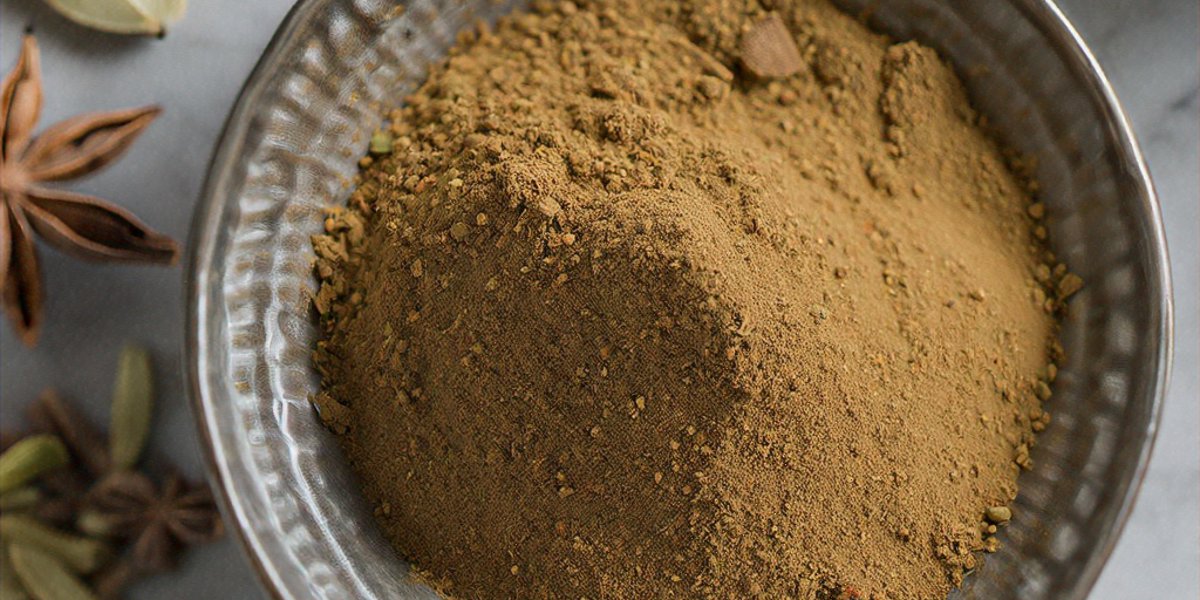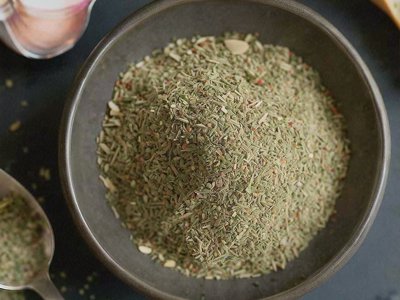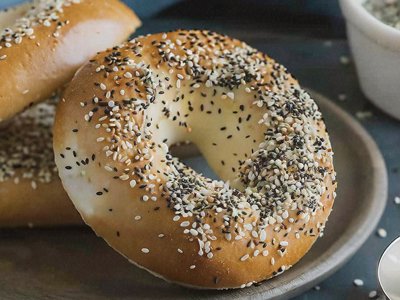Homemade Garam Masala
Garam masala, meaning "hot spice mixture" in Hindi, is the cornerstone of North Indian cuisine. This aromatic blend of warming spices adds depth, complexity, and fragrance to curries, rice dishes, and grilled meats. Making your own ensures the freshest flavors and allows you to customize the blend to your taste preferences.
Ingredients
- 2 tablespoons ground coriander
- 2 tablespoons ground cumin
- 1 tablespoon ground cardamom
- 1 tablespoon ground black pepper
- 1 teaspoon ground cinnamon
- 1 teaspoon ground cloves
- 1 teaspoon ground nutmeg
Instructions
Basic Preparation
Combine spices: Mix all ground spices together in a medium bowl, whisking until evenly distributed.
Sift for smoothness: Pass the mixture through a fine-mesh sieve for a uniform texture.
Store properly: Transfer to an airtight container, preferably glass.
Label and date: Mark your container with contents and date made.
Traditional Whole Spice Method (Recommended)
Whole Spice Ingredients
- 2 tablespoons coriander seeds
- 2 tablespoons cumin seeds
- 8-10 green cardamom pods
- 1 tablespoon black peppercorns
- 1 cinnamon stick (3 inches)
- 6-8 whole cloves
- 1/2 whole nutmeg
Preparation Steps
Toast the spices: Heat a dry skillet over medium-low heat. Add whole spices and toast for 3-5 minutes, stirring frequently until fragrant.
Cool completely: Let toasted spices cool to room temperature.
Remove pods: Take seeds out of cardamom pods and discard pods.
Grind fresh: Use a spice grinder or mortar and pestle to grind into a fine powder.
Sift and store: Pass through fine sieve and store in airtight container.
Understanding Garam Masala
The Philosophy of "Warming" Spices
In Ayurveda, the spices in garam masala are considered "warming" to the body, helping to increase circulation and digestion. Unlike chili-based heat, garam masala provides internal warmth through aromatic compounds.
Regional Variations
Punjabi Style
- More cinnamon and cloves
- Often includes bay leaves
- Sweeter, more aromatic profile
Bengali Style
- Includes cumin and fennel seeds
- Often contains dried red chilies
- More complex and layered
Kashmiri Style
- Features more cardamom
- Sometimes includes saffron
- Delicate and floral
Traditional Uses in Indian Cooking
When to Add Garam Masala
Beginning of Cooking
- Bloom in oil with onions
- Creates flavor base for curries
- Use 1-2 teaspoons for background flavor
End of Cooking
- Add in last 5 minutes of cooking
- Preserves aromatic qualities
- Sprinkle on finished dishes as garnish
As a Finishing Spice
- Dust over completed dishes
- Mix into rice just before serving
- Add to yogurt for raita
Classic Applications
Curry Dishes
- Chicken curry and tikka masala
- Lamb biryani and korma
- Vegetable curries and dal
- Paneer dishes
Rice and Grain Dishes
- Biryani and pilaf
- Jeera rice
- Kheer (rice pudding)
- Quinoa and grain bowls
Meat and Vegetables
- Tandoori marinades
- Roasted vegetables
- Grilled lamb or chicken
- Stuffed vegetables
Modern Fusion Applications
Western Dishes with Indian Flair
- Add to roasted root vegetables
- Season grilled meats and fish
- Mix into salad dressings
- Sprinkle on roasted nuts
Baking and Desserts
- Add to chocolate desserts
- Season fruit compotes
- Mix into ice cream
- Flavor cookies and cakes
Beverages
- Add to chai tea
- Mix into coffee grounds
- Create spiced simple syrups
- Flavor cocktails
Storage and Freshness
Proper Storage
- Airtight glass containers work best
- Store in cool, dark place
- Away from heat and humidity
- Whole spices last longer than ground
Shelf Life
- Freshly ground: 6-8 months peak flavor
- Store-bought: Check expiration dates
- Whole spices: Up to 2 years when stored properly
Signs of Freshness
- Strong, aromatic scent
- Vibrant colors
- No signs of moisture or clumping
Health Benefits of Garam Masala Spices
Coriander
- Aids digestion
- Rich in antioxidants
- May help regulate blood sugar
Cumin
- Good source of iron
- May boost immune system
- Traditional digestive aid
Cardamom
- Natural breath freshener
- May support heart health
- Contains antioxidants
Black Pepper
- Enhances nutrient absorption
- Contains piperine for health benefits
- Natural antimicrobial properties
Cinnamon
- May help regulate blood sugar
- Rich in antioxidants
- Natural anti-inflammatory
Cloves
- Natural numbing properties
- Strong antioxidant activity
- May support oral health
Nutmeg
- Contains compounds that may aid sleep
- Natural digestive aid
- Rich in minerals
Recipe Scaling
Large Batch (Makes 3/4 cup)
- 6 tablespoons each: coriander, cumin
- 3 tablespoons cardamom
- 3 tablespoons black pepper
- 1 tablespoon each: cinnamon, cloves, nutmeg
Small Test Batch
- 1 teaspoon each main ingredient
- Perfect for trying the blend first
Pairing with Other Spices
Complementary Spices
- Turmeric (for color and earthiness)
- Red chili powder (for heat)
- Asafoetida (for umami depth)
- Fresh ginger (for brightness)
Spice Layering
- Start with whole spices in oil
- Add ground spices mid-cooking
- Finish with fresh garam masala
Common Mistakes to Avoid
Over-toasting
- Watch spices carefully when toasting
- They can burn quickly
- Burnt spices taste bitter
Using Old Spices
- Check freshness before making blend
- Replace spices over 2 years old
- Taste individual spices first
Adding Too Early
- Don't add to very hot oil alone
- Can become bitter if overcooked
- Best added with other aromatics
Creating Your Own Blend
Starting Ratios
- Coriander and cumin: Base (40% of blend)
- Cardamom: Sweet aromatics (15% of blend)
- Black pepper: Heat and bite (15% of blend)
- Cinnamon, cloves, nutmeg: Warming spices (30% of blend)
Customization Tips
- More cinnamon for sweeter dishes
- Extra pepper for heat
- More cardamom for floral notes
- Add bay leaves for depth
Conclusion
Making your own garam masala is one of the most rewarding spice projects you can undertake. The difference between freshly ground spices and store-bought blends is remarkable - the aroma alone will transport you to the spice markets of India. This versatile blend will elevate not just Indian dishes, but any cuisine where you want to add warming, complex flavors. Start with this basic recipe and adjust to create your own signature blend that reflects your taste preferences and cooking style.



